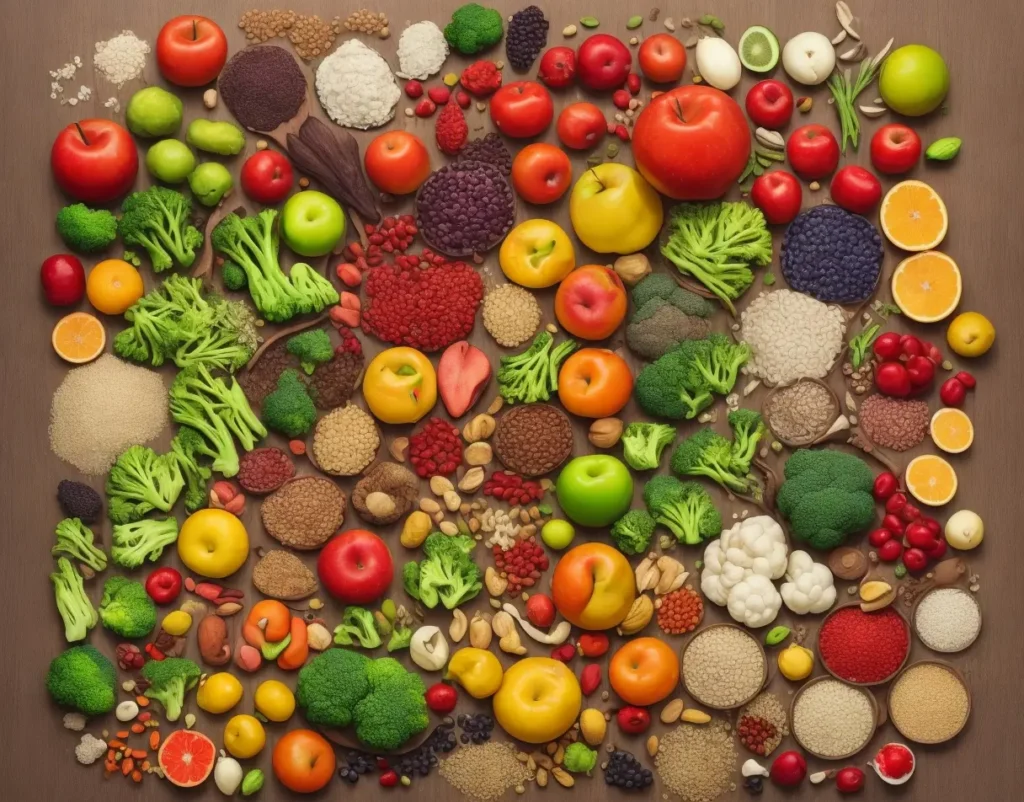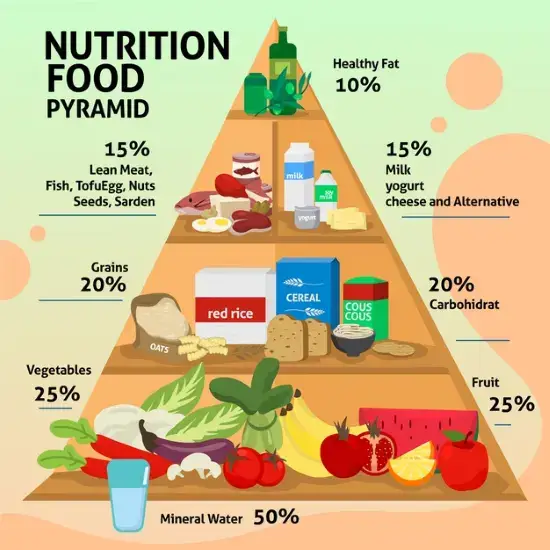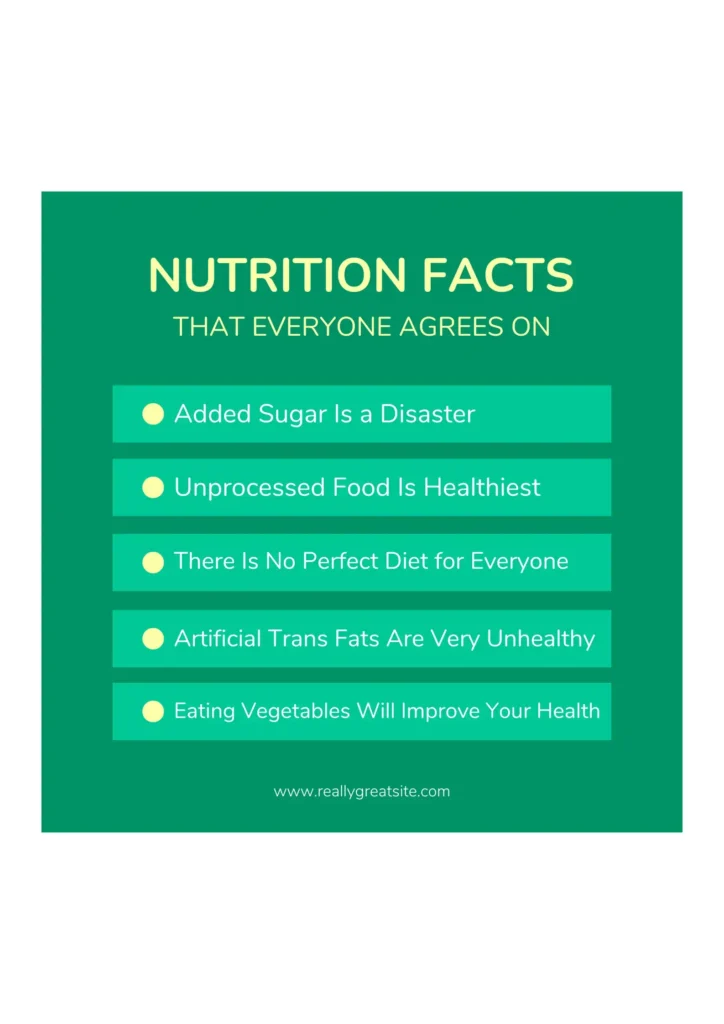In today’s health-conscious world, Understanding Nutrition Facts is more critical than ever. With the growing emphasis on making informed dietary choices, deciphering the information found on food labels has become essential for maintaining a healthy lifestyle. In this comprehensive guide, we’ll delve into the intricacies of Understanding Nutrition Facts, breaking down what you need to know to make better decisions about the food you consume.

What Are Nutrition Facts?
Defining Nutrition Facts
Understanding Nutrition Facts, commonly found on food labels, provide essential information about the nutritional content of a particular food item. They offer details about the number of calories, macronutrients (such as carbohydrates, proteins, and fats), vitamins, minerals, and other key components within the product.
The Importance of Understanding Nutrition Facts
Why do Understanding Nutrition Facts hold such sway over our dietary choices? Their importance transcends the mere label on a product:
Informed Gastronomic Decisions:
Just as a skilled SEO specialist meticulously examines data to formulate strategies, Understanding Nutrition Facts empower consumers to make conscious dietary decisions. They enable individuals to discern whether a product aligns with their health objectives and dietary inclinations.
Mastery of Calories:
Nutrition labels unveil the caloric content of a food item, a pivotal factor in weight management. For those keeping a watchful eye on their waistlines, comprehending calorie counts is tantamount to charting a successful course.
Navigating Allergens:
In an era where food allergies are as prevalent as trending keywords in the SEO world, nutrition labels provide vital allergen information. This aids individuals with food sensitivities or allergies in sidestepping potential health hazards.
Tracking Nutrient Intake:
Nutrition facts act as our dietary GPS, helping us monitor the consumption of essential nutrients. They ensure we meet our daily requirements for optimal health.
Components of Understanding Nutrition Facts :
Understanding Serving Size
The journey into the world of Understanding Nutrition Facts commences with the serving size, the lighthouse guiding us through the nutritional maze. It delineates the recommended portion of the product and is essential for accurate calorie and nutrient calculations. Understanding Nutrition Facts helps individuals determine how the food fits into their overall diet.
Calories Unveiled
Calories, akin to the currency of the nutritional world, take centre stage in our dietary narrative. Grasping the calorie count equips us with the knowledge required to manage our daily energy intake effectively. However, it’s crucial to recognize that the number of calories you need may vary based on factors such as age, gender, activity level, and overall health.
Deciphering Macronutrients :
Exploring Carbohydrates
Calories, akin to the currency of the nutritional world, take centre stage in our dietary narrative. Grasping the calorie count equips us with the knowledge required to manage our daily energy intake effectively. However, it’s crucial to recognize that the number of calories you need may vary based on factors such as age, gender, activity level, and overall health.

21 DAYS
TO A SLIMMER, SEXIER YOU!
THE SMOOTHIE DIET is a revolutionary new life-transformation system that not only guarantees to help you lose weight and feel better than you have in years, it also promises to eliminate more body fat – faster than anything you’ve tried before.
Proteins are essential for building and repairing tissues. They also play a role in various bodily functions, making them a crucial part of any diet. Understanding Nutrition Facts related to the protein content of a food item can help individuals ensure they are meeting their protein needs, especially if they follow a vegetarian or vegan diet.
Navigating Fats
Fats provide energy, support cell growth, and aid in the absorption of fat-soluble vitamins (such as vitamins A, D, E, and K). Nutrition labels often specify the types of fats present, including saturated, unsaturated, and trans fats. It’s essential to limit the intake of saturated and trans fats, as they can contribute to heart disease.
Embracing Vitamins and Minerals
Nutrition labels serve as our alphabet, spelling out the percentages of the recommended daily intake offered by a serving of the food. This information helps individuals ensure they meet their nutrient requirements. For example, a food item high in vitamin C can contribute to a person’s daily intake of this essential nutrient, critical for bolstering the immune system.
Liv Pure
Lean Belly
Exipure
Percent Daily Value
The percent daily value (%DV) indicates how much a nutrient in a serving of food contributes to a daily diet. It’s based on a daily intake of 2,000 calories, which is the general daily calorie intake used for nutrition labels. Keep in mind that your individual calorie needs may differ, so the %DV serves as a rough guideline.
Reading and Interpreting Nutrition Labels :
Checking Serving Size
Always start by checking the serving size to determine if it aligns with your intended portion. All other information on the label is based on this serving size. If you plan to consume more or less than the stated serving size, adjust the values accordingly.
The Calorie Focus
Pay attention to the calorie count, especially if you’re managing your weight. Ensure that the calories from the serving align with your daily caloric goals. If you’re trying to lose weight, you may aim for foods with lower calorie counts per serving.
Evaluating Macronutrients
Evaluate the levels of carbohydrates, proteins, and fats in the food item. Adjust your intake based on your dietary requirements and health goals. For example, individuals following a low-carb diet may opt for foods with fewer carbohydrates.
Seeking Essential Nutrients
Identify the key vitamins and minerals essential for your health. Confirm that the food item positively contributes to your daily nutrient intake. If you’re looking to increase your calcium intake, opt for products with a higher %DV for calcium.
Being Mindful of Added Sugars and Sodium
Exercise caution regarding added sugars and sodium content, as excessive consumption can lead to health issues like obesity and high blood pressure. Nutrition labels now feature a dedicated line for added sugars, simplifying their identification in processed foods.
Conclusion
Understanding Nutrition Facts is a valuable skill that empowers individuals to make informed dietary choices. By reading and interpreting nutrition labels correctly, people can take charge of their health and make choices that align with their nutritional needs and goals. Whether you’re striving for better weight management, seeking to meet specific dietary requirements, or simply aiming to make healthier choices, nutrition facts are your ally in achieving these goals.
Frequently Asked Questions (FAQs)
- Are the daily values on nutrition labels the same for everyone?
– No, the %DV is based on a daily intake of 2,000 calories, which may not be suitable for everyone. Individual calorie needs vary based on factors like age, gender, activity level, and overall health.
- How can I identify hidden sugars in food labels?
– To unmask hidden sugars, scrutinize the ingredient list for terms like sucrose, glucose, fructose, and high-fructose corn syrup. These are telltale signs of added sugars. Additionally, check the “Added Sugars” line on the nutrition label.
- Is it essential to meet 100% of the daily values for all nutrients every day?
– Striving to meet 100% of the %DV for all nutrients daily is not mandatory. These values serve as general benchmarks; individual requirements may vary. Focus on achieving a balanced diet over time.
- Can nutrition labels help with dietary restrictions, such as a gluten-free diet?
– Yes, nutrition labels play a pivotal role in catering to dietary restrictions. They provide information about allergens like gluten, making it easier for individuals with specific dietary needs to identify safe foods. Look for “gluten-free” labels and allergen warnings.
- Where can I find reliable information about the nutritional content of foods without labels, such as fruits and vegetables?
– Government health websites, nutrition apps, and registered dietitians offer reliable information on the nutritional content of unprocessed foods. They can guide you in making informed choices when labels are absent.





Pingback: Unlocking Vitality: The 4 Important Functions of Fats for Optimal Health - Healthzl.com
Pingback: Comprehensive Guide: How to Get Rid of Tyramine in the Body - Healthzl.com